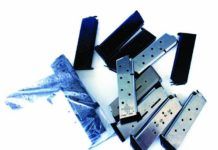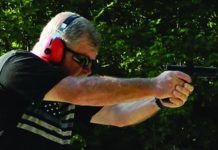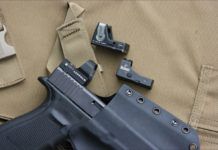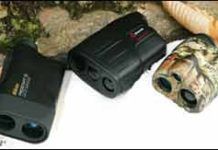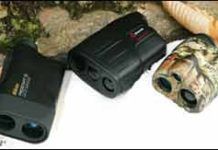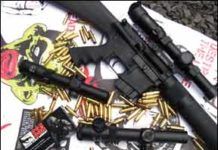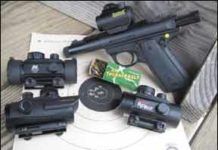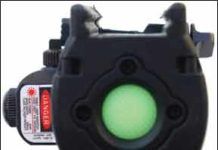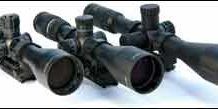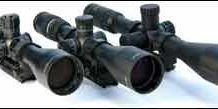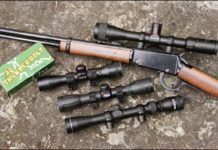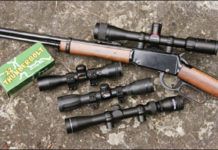1911 Magazines: Some Are Good, And Some Should Be Avoided
Magazines for the 1911 pistol have evolved more during the past two decades than during any other time since the pistol's introduction. The bane of the 1911 is cheaply made magazines, with poor ammunition close behind. For many years, the only choices were Colt factory magazines, which were usually high quality, then GI magazines, and poorly made gun-show magazines. Some were marked COLT 45 on the base in bold letters, and these usually meant the shooter was the real deal. At a time when new Colt magazines were around $15, aftermarket magazines sold for as little as $4, and most of them were not worth the aggravation. GI magazines were good quality, but shooters often found them bent and worn out, unless they were new in the wrapper. Quite a bit of barrel feed-ramp polish and tuning of extractors went on that probably was tied to ammunition and magazine problems. Some of the aftermarket magazines were not properly welded. In other cases, the follower was too tight in the magazine body; and in other instances, the magazine springs were weak. Others had poorly attached buttplates, that gave way when dropped on the ground during IPSC competition. Some survived, others did not.
The basic construction of the magazine itself has changed from sheet steel to aluminum and plastic followers versus metal followers. We have examined quite a few magazines that invited a situation called false slide lock. The follower appeared to catch the slide lock, but the slide lock was actually on the wrong shelf, which isn't good for any of the parts. A 1911 feeds by the loading block on the bottom of the slide stripping the cartridge forward as the slide moves forward. The cartridge case rim catches under the extractor and is pressed forward. Some feel that it is a good thing that the bullet nose snugs a little over the feed ramp and bumps the cartridge case head into the breech face as the cartridge enters the chamber. Some magazines, notably the Wilson Combat, allow the bullet nose to strike much higher on the ramp, which results in missing the feed ramp's edges more so than others.
…
Glock Night Sights: We Test Glow-in-the-Dark Aiming Aids
As a carry handgun, the Glock is rugged, reliable, and combat worthy. About the only modifications that actually improve the Glock are the addition of a better trigger and a set of aftermarket sights. We dealt extensively with the issue of trigger replacements in the April 2014. There, we installed a Zev Technologies' GlockWorx Ultimate kit from Brownells.com ($250, #100-006-566WB, Mfr. Part: ZTFULULT4G9BLK) into our Glock 17. We gave the Ultimate Kit an A grade, saying it "was the upgrade that produced the biggest difference in performance all by itself, increasing the accuracy of the Glock 17 from an average grouping of 2.3 inches down to 1.6 inches."
Also in the April 2014 issue, we looked at two sight-upgrade kits, both from Brownells. One was the Brownells Glock 17 Sight Upgrade Kit ($200, #080-000-919WB), which included a Meprolight (Kimber) ML-10224 Tru-Dot Night Sight System for Glock 17, 19, 22, 23, 31, 32, 33, 34, 35, 37, 38, 39; an MGW Glock Sight Adjustment Tool, and an Ed Brown Front Sight Tool for Glock. Since we had the installation tools handy, we also ordered a set of TruGlo tritium fiber-optic Brite-Sites ($90, #902-000-107WB, Mfr. Part: TG131GT1Y), yellow rear and green front. We chose to put the TruGlo sights on the Glock 17 and the Tru-Dots on a G34 so that we could shoot them side by side.
With the Ed Brown Front Sight Tool for Glock ($20 sold separately, #087-017-001WB, Mfr. Part: 952) and the MGW Glock Sight Mover ($100 sold separately, #584-045-017WB, Mfr. Part: MGW309) for the rear sight, we started the switch with a disassembly of the slide to get access to the front sight. With the Ed Brown front sight tool and a small crescent wrench, we loosened the screw beneath the sight and removed it, then replaced the white dot with the new TruGlo front sight and tightened with the crescent wrench. Once the front sight was swapped, we hooked the slide into the MGW. The device came with some thin plates to raise the slide up the right height. We did not need them. The old sight drifted out with relative ease, going left to right pointed away from us. The new rear TruGlo sight did require some minor fitting with a file and a little more strength to slide in, but with the MGW tool, leverage was not a problem. We used the same process to put the Meprolite sights onto a factory Glock 34.
Despite the new TruGlo sights being fixed like the originals, we found them to be much clearer and easier to acquire and reacquire targets. We took to the range with the TruGlo sights installed, using all other original parts, and we cut our average group size down by almost half an inch, from 2.3 inches with the standard Glock to 1.9 inches with the TruGlo sights. We turned down the lights over the shooters, leaving the targets illuminated to check out how much the tritium would glow in the fiber-optic sights. The green front sight was quite bright, while the rear yellow sights were significantly dimmer, although still visible.
The Meprolight Tru-Dots provided an even more impressive change on the G34. We shaved just over a full inch off our average group size at 10 yards once we installed them.
Upgrading fixed sights can seem like a challenge to someone who hasn't done work on pistols previously, but with these tools and the simplicity of Glock's designs, this upgrade is a great place to start if you want to attempt a DIY project. You can drift the sights out with a punch, which will save $100 for the MGW tool, but you risk rupturing the tritium capsules. The MGW mover requires oil on the crankshaft, but it made drifting the dovetail sights in and out so easy we quickly misplaced our punch set. Overall, we found the TruGlo sights to be a nice upgrade and would recommend putting them in place of the standard non-tritium sights on any factory Glock. We gave them a Grade: A ranking, along with the Meprolight Tru-Dot tritium.
Naturally, readers asked about other sights, so we began looking at more replacements we could test head to head, rather than as a general Glock upgrade. So, again working with Brownells, we assembled a sextet of night sights suitable for installation on various Glocks. Also, we believe you can broaden our recommendations to include other firearms of similar size — the visual presentation won't be appreciably different on different platforms — though the installation process may differ gun to gun.
Reflex Sights for Carry Guns: Leupold Bests Trijicon, Burris
Adding a red-dot reflex sight to a carry pistol has pros and cons. First, the cons. The total cost of the weapon system nearly doubles as the sights are almost as expensive as the pistol, the sights have a larger footprint than the typical rear sight, battery life must be monitored, and foul weather can diminish the capability of the sight. The pros are the sights offer faster target acquisition and ease of aiming. The ability to shoot faster and more accurately in situations under 25 yards are strong reasons to make the switch from iron sights to a reflex sight, so we wanted to investigate mounting a reflex sight on a pistol to see how a reflex sight would work on a carry gun. We chose a Glock 20 Gen 4 as our test platform for two reasons. Glocks are popular pistols among LE and civilians and because the G20 is chambered in 10mm, which has comparable power to a 41 Magnum. We wanted to rattle the innards of these tiny sights to see if anything would fall out, get loose, or go out of zero. Even though the G20 is a full-size pistol, we have found that with the proper holster, like those from Bravo Concealment, and a concealing garment, the G20 can be invisible to the untrained eye.
A reflex sight allows an operator to keep both eyes open and view a target through a small curved glass lens, which has a reticle projected onto it. A light-emitting diode projects a red dot, amber chevron, or other aiming point, giving the operator an unlimited field of view since there is no magnification and the aiming point projects out to infinity. This means that parallax will not affect sighting; place the aiming point on a target, and if zeroed properly, the target will be hit.
Think of them as mini heads-up displays for your pistol.
Laser Rangefinders Under $200: Simmons, Nikon, and Redfield
It does not matter what type of implement you use - modern firearm, muzzleloader, or bow - determining distance to your target is critical. For a primitive-weapons hunter, it means waiting until the beast comes into range. For a user of modern firearms, it might mean dialing in exactly the right amount of hold-over - or passing up a shot - on a trophy thats at the edge of your ability to shoot accurately. One of the fastest, easiest to use, and affordable means of accurately gauging distance to various targets is a laser rangefinder. Laser rangefinders are basically a monocular that send out a pulsating laser beam that bounces off a target back to the unit and provides an instantaneous readout in yards or meters. The laser is similar technology to that used in autofocus cameras.
The price of rangefinders is directly attributed to the quality of electronics of the rangefinder. More expensive rangefinders have lasers with less beam divergence, which is when the laser-beam diameter begins to spread out over distance. Instead of a tight, narrow beam, the beam becomes wider, like a cone, at the target end of the beam. The more beam divergence, the less accurate the distance reading. Those more expensive rangefinders also have more added features like a ballistic calculator, modes for use in rain or snow, different reticle choices, can range at farther distances, to name a few.
We recently tested three affordable laser rangefinders with similar maximum distances and features.
Laser Rangefinders Under $200: Simmons, Nikon, and Redfield
It does not matter what type of implement you use - modern firearm, muzzleloader, or bow - determining distance to your target is critical. For a primitive-weapons hunter, it means waiting until the beast comes into range. For a user of modern firearms, it might mean dialing in exactly the right amount of hold-over - or passing up a shot - on a trophy thats at the edge of your ability to shoot accurately. One of the fastest, easiest to use, and affordable means of accurately gauging distance to various targets is a laser rangefinder. Laser rangefinders are basically a monocular that send out a pulsating laser beam that bounces off a target back to the unit and provides an instantaneous readout in yards or meters. The laser is similar technology to that used in autofocus cameras.
The price of rangefinders is directly attributed to the quality of electronics of the rangefinder. More expensive rangefinders have lasers with less beam divergence, which is when the laser-beam diameter begins to spread out over distance. Instead of a tight, narrow beam, the beam becomes wider, like a cone, at the target end of the beam. The more beam divergence, the less accurate the distance reading. Those more expensive rangefinders also have more added features like a ballistic calculator, modes for use in rain or snow, different reticle choices, can range at farther distances, to name a few.
We recently tested three affordable laser rangefinders with similar maximum distances and features.
Illuminated-Reticle AR Scopes: We Prefer Leupold and Hi-Lux
Low-power scopes with illuminated reticles bridge the gap between close-range red-dot sights and high-power scopes. These scopes are built with ARs in mind, but could be used on other types of rifles. We recently tested a trio of these dual-use optics, which were compact, lightweight, employed a 30mm tube with a small objective lens, and featured an illuminated reticle. The distinctive differences between them were the reticles. The players were the Leupold Model VX-R Patrol 1.25-4x20mm, $580; Hi-Luxs CMR 1-4x24mm, $400; and the Millett DMS-1 1-4x24mm, $405.
All three scopes featured a fast-focus ocular lens, came with a battery, wore a matte black finish, and had some magnification. The Millett and the Hi-Lux came with flip-up lens covers that allowed use of the fast focus on the ocular lens housing. The turrets for all scopes clearly indicated adjustment direction. Before any lead was fired downrange, we went through our usual battery of tests.
With the illuminated reticle turned on we whacked the scopes on a wooden bench to determine if a jolt would have an effect, slamming both the objective and ocular with enough force to drive a roofing nail. The scope reticles remained lit and turrets and magnification rings operated. They were then subjected to a deep freeze (-4 F) and then soaked in hot water to see if seals leaked. The Hi-Lux and the Leupold do not have turret covers; the Millett does. We kept the turret covers on the Millett so not to give the other two scopes an advantage. The scopes were unfazed by the cold, with controls working with ease. Fogging was anticipated when they were removed from the freezer to room temperature, and all three fogged slightly, giving a milky view that still could be used effectively. The Millett took the longest, about 5 minutes, to completely clear. When placed in hot water, the Hi-Lux expelled a string of bubbles from the magnification ring and illumination knob. We anticipated the worse, but found the Hi-Lux to be fine. There was no water in the scope to be seen and controls worked perfectly. The Millett spat out a few bubbles from the turret caps, but like the Hi-Lux was unaffected. The Leupold expelled no bubbles. The reticles stayed lit during the soaking.
All scopes had the same resolution, with a clear view up to the very edge of the lens. No scope seemed to have an advantage with color/contrast. It was during the brightness test at dusk when the Leupold showed its stuff. It by far used the most light and provided the most brightness, our testers agreed. The Hi-Lux came in second, then the Millett.
We did note that the Leupold and Millett reticles, when not illuminated, were the easiest to employ because of their thick, black crosshairs. The Hi-Lux had much finer crosshairs, and when not illuminated, took more time to see. The three scopes showed a signature at night that was apparent downrange when viewed head on. A slight red glow could be seen from the Leupolds and Milletts objectives; we could see a green glow from the Hi-Lux. Reticles were adjusted across a grid and brought back to zero with no issues. All three scopes passed the non-shooting tests, so they progressed to range testing.
Range time was broken into two segments. First was close-range shooting at 50 yards, and second was precision shooting at 100 yards. We shot with and without the reticle illuminated. Close range consisted of what we dubbed the Romero Routine. With zombie targets at 50 yards, the rifle was shouldered with the muzzle pointing down at about 45 degrees, then the shooter raised the barrel and squeezed off two shots as fast as he could into the cranial area of a Zombie Industries (ZombieIndustries.com) target. George Romero directed Night of the Living Dead in 1968, and from this cult classic we all know only head shots kill zombies. Then, from a benchrest at 100 yards, we shot the box to check tracking and return to zero. We also checked point of impact by shooting at minimum and maximum magnifications. Zombies at 100 yards were also on the agenda.
A Stag Arms Model 7 (StagArms.com) flattop in 6.8 SPC was used with a Leupold Mark 2 IMS (Integral Mounting System) with 30mm rings for all scopes. The Mark 2 IMS provided the correct height needed for an AR. Ammo consisted of Silver State Armory (SSArmory.com) cartridges loaded with 110-grain Nosler AccuBond bullets that zipped at 2550 fps. The combination of rifle, ammo, and any of the scopes were a good setup. They worked like a team. The scopes, which are all close in length and weight, balanced nicely on the rifle, placing weight between a shooters hands. Testers felt any of the scopes would work and work hard, but it was the subtle details of each scope that tipped the ratings. Heres what we discovered once the brass cooled.
Inexpensive Red Dot Sights-BSA, NcStar, Tasco, & Bushnell
Back in 1975, Aimpoint offered the first commercial red-dot sight. Those initial sights were heavy and good luck trying to find a replacement battery. Today's red-dot units are lighter and use batteries sold at convenience stores and gas stations, and as the weight of the sight decreased, so too did the price. One of our testers cringes at the price he paid for a used Aimpoint in the ‘80s. Today, he could purchase eight $50 modern red dots for the same money.
We wondered, however, if the sub-$50 red dots really did keep their utility as they got more affordable. To find out, we tested three affordable sights, the Tasco BKRD30 ($50), BSA Model RD30 ($40), and NcStar DBB130 ($40). To give us some contrast, we also tested a potential ringer, the Bushnell TRS-25, which costs about $100. Would the extra cost prove to be a good investment, or would the sights that cost half deliver similar performance to the Bushnell? Before we began range work with the red dots, they were shock-tested by dropping them on a wood floor from a height of 4 feet. The jolt had no effect on the sights; dots remained illuminated and the knobs still turned.
Next, the dots were activated with the turret covers left on and frozen at -4 F then soaked in hot water. Some of the instruction manuals stated the battery and turrets caps need to be secured when using the sights in extreme conditions. We abided and left the turret caps on. All had some type of pliable gasket on the turrets to seal out dust and moisture. So, too, did the battery compartments. There were no hiccups from the cold. In the water, all the sights released a few air bubbles form the rheostat knob, but again there were no malfunctions.
We used a Ruger 22/45 for range testing. Shooting was from a rest using a two-hand hold. We fired 40-grain Remington Thunderbolt cartridges with a velocity of 1255 fps at NRA 50-foot timed- and rapid-fire pistol targets.
All the sights had Picatinny rail or Weaver-style bases for mounting. The NcStar and BSA both had one clamp that was adjustable. The Tasco's mounts were fixed. The Bushnell had only one mounting clamp. All the clamps could be tightened with a flat screwdriver or coin. Only the Bushnell required a hex wrench, which was supplied with the sight. These sights are made to be zeroed and left alone, but we cranked the windage and elevation around the horn, while noting the number of clicks to see if they returned to zero. None of them did.
We also looked at the ability to pick up the dot with both eyes opened, consistency shot after shot, and ease of use. Here's what we thought about each unit.
Uncluttering Your AR-15 Rail: Pick Combo Laser/Light Grips
The AR-15's popularity is partially due to the weapon's modularity, light weight, and fast handling. But too much technology hung off every rail can morph the AR into an unwieldy and overly complicated rig—turning "tactical" into "tacticool."
Multifunction devices that combine optical laser and lighting into a vertical grip platform can help keep your rifle trim and uncluttered. We recently tested four such laser/light foregrips from three manufacturers. From MidwayUSA we bought two models made by Crimson Trace Corporation, the MVF-515 Red ($399, # 211142) and the MVF-515 Green ($599, # 812310). Both grips use a dual output 150-/200-lumen LED and feature independent controls for the light and laser. The now-discontinued but inexpensive Lasermax Colt AR-15 CGL Foregrip Laser ($161 at www.CheaperThanDirt.com, #61493) combines a red laser with a low-output LED for navigation lighting. At Sig's online store www.SigSauer.com, we found the Sig Sauer Stoplite STL-300J, $215, which combines a monstrous 700-lumen tactical light with a red laser.






























